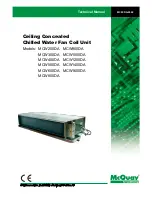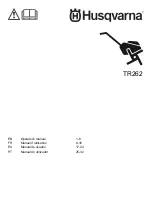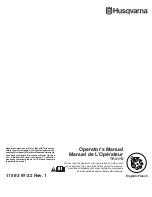
25
EN
Wash hands with soap and water after handling old oil.
NOTE:
Dispose of old oils while respecting the environment. We
advise you to seal it in a container to be delivered to the nearest
mechanic shop. Do not throw it in the trash or pour it on the floor..
1. Filter maintenance
A dirty air filter does not allow a good air passage for the car-
buretor. To avoid anomalous operation of the carburetor, regularly
maintain the air filter.
Maintenance should be more frequent if you work in very dusty
places.
ATTENTION
To clean the air filter never use gasoline
or solvents with a low flash point. Explosions or fires
may occur.
ATTENTION
Do not start the engine without the air fil-
ter on. It would cause a rapid engine wear.
- Remove the wing nut and air filter cover. Remove the components
and separate them. Check them carefully and if they are damaged
they must be replaced.
- Foam element: clean with warm water and soap, rinse and allow
to dry. Or clean with a solvent that has a high flash point and let
it dry. Immerse it in clean engine oil and remove excess oil. The
engine, in the starting phase, can produce smoke if too much oil is
left in the foam element.
- Paper element: gently shake it on a hard surface to remove dirt or
blow it with compressed air from the inside to the outside of the
filter. Do not try to remove the dirt with a brush; the dirt would
eventually penetrate the fibers.
(1) Paper element
(2) Foam element
2. Cleaning the fuel filter cap
ATTENTION
Gasoline is extremely flammable and explo-
sive under certain conditions.
- Do not smoke or generate sparks in the surrounding area.
Turn the fuel valve OFF and remove the fuel filter cap together with
the O-ring.
Clean the parts with a solvent, allow them to dry and put them
back in place, asserting them safely.
Turn on the fuel valve and check for leaks.
(1) O-ring
(2) Fuel filter cap
3. Maintenance of spark plugs
Recommended spark plug: BPR5ES (NGK)
To ensure perfect operation of the engine, check that the spark plug
electrodes are properly open and have no deposits.
1. Remove the spark plug pipe
ATTENTION:
After
starting the engine, the
muffler will be very hot. Do not
touch it.
2. Inspect the spark plug. Replace it if the electrodes are worn, or
if the insulator is cracked or chipped.
3. Measure the spark plug electrode gap with a
suitable gauge. The gap should be 0.7-0.8 mm. If
necessary, correct the gap by carefully bending
the side electrode.
4. Install the spark plug
carefully, by hand, to avoid
cross-threading.
5. Tighten a new spark plug half turn with the wrench to compress
the washer. If a spark plug is reused, replace it in the seat with
only ½ - ¼ turn.
WARNING:
Screw the spark plug thoroughly. Otherwise,
it may overheat and cause engine damage. Do not use
spark plugs that have an unsuitable thermal range.
















































